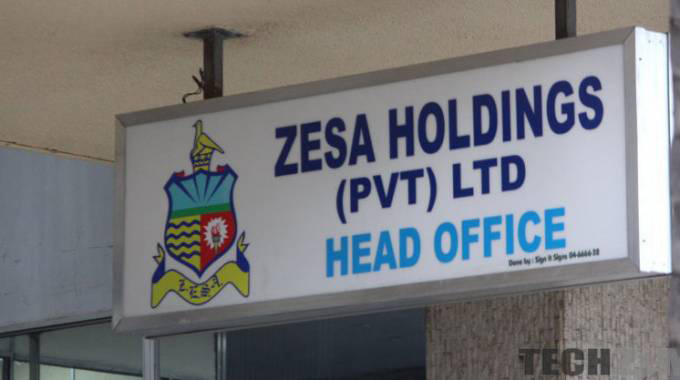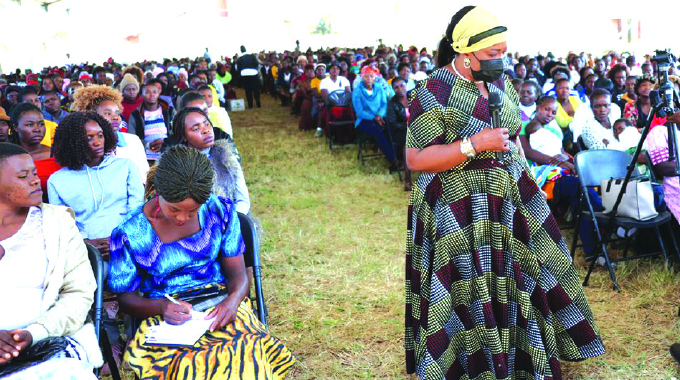EDITORIAL COMMENT: Serious commitment is needed to curb stadium crisis

THE domestic Premier Soccer League football matches were suspended this week, much to the disappointment of football-loving Zimbabweans.
The decision by the PSL left many football-loving Zimbabweans frustrated. The suspension came without prior warning, even as the teams were preparing for the weekend games that had been announced earlier in the week.
This was supposed to be an interesting weekend of football as CAPS United were supposed to host traditional rivals Highlanders in Harare while Dynamos coach Hebert Maruwa was to see off the decisive match of his two-match ultimatum in a clash with Black Rhinos.
It must also have been disappointing for Herentals and Simba Bhora, as the suspension of the league games came barely 24 hours before their scheduled match at the National Sports Stadium.
Unfortunately, it had to come to this. But it was always going to reach this low point considering the serious shortage of stadiums the league has been facing since the start of the season.
This was only made worse after some stadiums such as Nyamhunga, Vhengere and Sakubva which used to host Premiership games last season were condemned as unfit for the purpose, in line with the CADF and FIFA standards.
The situation has been so dire that eight teams had to share the National Sports Stadium for their home games in Harare, creating a fixture congestion that has never been seen even in the whole Southern African region.
The arrangement was that the National Sports Stadium would host an average four matches per week since the season started. It was revealed that 44 games were played in 77 games and such a situation was unsustainable.
This has inevitably led to the suspension of the league games. The National Sports Stadium had suffered much from overuse.
The grass turf is now in a bad state and fans have always complained about the poor state of the toilets and ablution services due to the non-functional water reticulation system.
At some point, the National Sports Stadium was going to give in.
The custodians of the ground, the Sports and Recreation Commission, also anticipated the crisis and this week they cracked the whip on the PSL by ordering them to reduce the number of games to two per week, in order to allow the destroyed grass to rehabilitate.
They also wanted the games to be played in an empty stadium so that the contractors working on the water reticulation system would move at a much faster pace without having to worry about disturbance of the fans, who have been thronging the facility at least four of the seven days in a week since March.
The stadium is undergoing major maintenance works on water reticulation at the same time, and the SRC could be justified for asking the PSL to give them a bit of space to work on the critical aspects of the ground.
But then the prospects of playing in an empty stadium was always going to be unacceptable to both the PSL and the spectators themselves.
As a result, the PSL were caught between a hard rock a hard place and a rock. They had to defer the games because they had no better choice.
This decision, however, has not been received well by the fans and other football stakeholders. The general feeling is that it will disrupt the momentum of the teams and will also impact on the efforts that had been underway to try and boost stadium attendances.
The PSL clubs have to take their lessons from this. The suspension of the games was a stark reminder to the PSL clubs about the need to invest in their own football facilities.
A club like Highlanders will soon be celebrating 100 years of existence in 2026 but they don’t have their own ground for league games. Dynamos are also commemorating 60 years this year and CAPS United 40 years, but they still rent training and playing facilities.
Something is not right. The PSL teams, especially the traditional big teams, have not done their part in terms of investing in infrastructure, yet their core business is playing football.
The over-reliance on facilities owned by third parties has not worked for them. Instead, it is the new teams that have shown direction.
FC Platinum secured a lease of Mandava from the Zvishavane Town Council in 2012, their first year of Premiership football, and have made vast improvements on the stadium to make it one of the most dependable.
Ngezi Platinum Stars constructed a new stadium in 2016 following their promotion to the topflight league. Most recently, Simba Bhora, Sheasham and GreenFuel have also shown initiative by investing in football infrastructure.
Sadly, in the big cities of Harare and Bulawayo nothing of that sort has ever happened. The municipal authorities in charge of the cities should also play their part by availing land and facilitating lease agreements so that the football stadiums are in shape and no inconveniences, like has been experienced this week, will be encountered.
Dynamos recently made overtures for Rufaro, through their sponsors Sakunda Holdings, and they were only frustrated. Yadah tried it with the Chitungwiza municipality for Chibuku Stadium but corruption in the Council scuttled the proposed deal. It is high time the stakeholders work together for the betterment of the game through the provision of infrastructure. Dzivaresekwa and Gwanzura are currently lying idle and in dilapidated state yet Harare-based PSL teams are facing a shortage of stadiums.
Serious commitment is needed to curb the stadium crisis the country is facing.










Comments